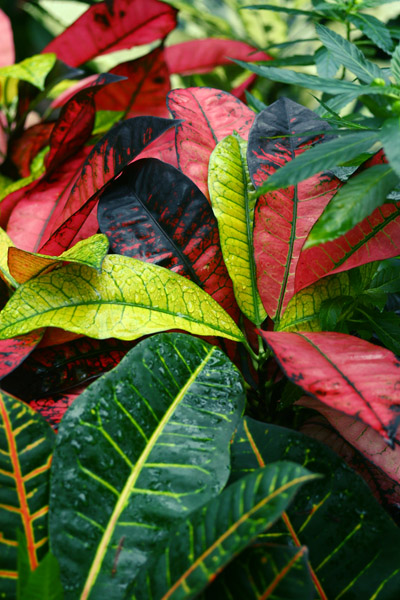 So, yeah, it’s winter, the slow season, and there isn’t a lot to photograph, which means it’s time for our yearly visit to the Museum of Life & Science, specifically the butterfly house, though on occasion we get some other types of images as well. Unfortunately, the day we scheduled this for was overcast and rainy, and since the butterfly house is a giant greenhouse, this meant light conditions inside weren’t very good either, not just slowing shutter speeds down and creating more gloomy shadow areas, but causing the lepidoptera to be sluggish and uninspiring as well. We had to be fairly selective with what we tackled, and the number of useful frames produced by this excursion was definitely lower than previous years.
So, yeah, it’s winter, the slow season, and there isn’t a lot to photograph, which means it’s time for our yearly visit to the Museum of Life & Science, specifically the butterfly house, though on occasion we get some other types of images as well. Unfortunately, the day we scheduled this for was overcast and rainy, and since the butterfly house is a giant greenhouse, this meant light conditions inside weren’t very good either, not just slowing shutter speeds down and creating more gloomy shadow areas, but causing the lepidoptera to be sluggish and uninspiring as well. We had to be fairly selective with what we tackled, and the number of useful frames produced by this excursion was definitely lower than previous years.
By the way, while I said it was rainy out, this image was taken indoors, and the glass panels of the roof are in fine shape; the moisture is courtesy of the misting stations set up at strategic points around the enclosure, helping produce the rainforest conditions that make the butterflies happy. But the same conditions make photography slightly challenging, most especially from the standpoint of when you can actually be ready to shoot. The Impatient Mr Bugg forgot my admonitions not to remove his lens cap before his camera had completely reached the temperature of the air in there, and fogged up his lens as the humidity lovingly adhered to the cooler glass; this meant he had to wait even longer for this to clear than if he’d simply kept the cap in place for the required amount of time. This is one situation where taking a quick peek is a no-no, like opening the darkroom door to see if anyone has film out.

I had foregone the flash rig (mostly due to being short on time as I went out the door) and was shooting in ambient light, and so was doing some esoteric experiments with creativity and being fartsy. I said they were experiments – I didn’t say they were successful. But I still like the way the antennae of this Low’s swallowtail (Papilio lowi) echoed the leaf structures of the background. Those pale iridescent patches on the hindwings will probably turn up in better detail a little later.
![]()
This one is likely a longwing species, genus Heliconius, but don’t quote me on that – the identifying images I have all show the dorsal surface of the wings and not the ventral seen here. “Longwing” is a relative term, since from proboscis to wingtip this specimen doesn’t exceed 4cm, giving an idea how short the depth of field is; another impression can be gathered from the antennae, one of which is flat to the focal plane and sharp almost the entire length, while the other points almost directly towards the camera and nearly defocuses to invisibility. While it’s not the best image for identification or anatomy, I like it as a portrait, and it gives a good impression of dense foliage.

Is this some kind of exotic snail from southeast Asia, or perhaps even a snail-mimicking rodent? Doubtful, since such rodents don’t exist, and it looks exactly like the snails we have around here in abundance. But while it was cruising the large leaf with both eyestalks and feelers in sight, I had to go for the minimal diversity that it presented. Seriously, even the flower blossoms were sparse on this trip.
Meanwhile, apparently we weren’t the only ones doing the observing. I turned around at one point and found this one watching me through a gap in the leaves.

After my previous experience with butterflies, I have very limited trust of them, and we started addressing each other with code names after that, and took a circuitous route home. Can’t be too careful…




















































